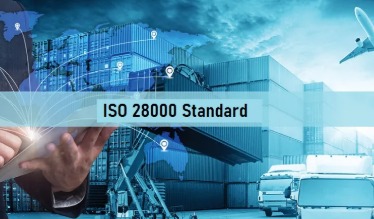In today’s interconnected global economy, supply chains have become increasingly complex and vulnerable to a variety of risks—ranging from theft and terrorism to cyberattacks and natural disasters. To ensure the safety, reliability, and resilience of supply chain operations, organizations worldwide are turning to ISO 28000:2022, the international standard for Security Management Systems for the Supply Chain.
What is ISO 28000:2022?
ISO 28000:2022 is an international standard developed by the International Organization for Standardization (ISO) that specifies the requirements for a Security Management System (SMS) in the supply chain. It helps organizations assess security threats, implement preventive measures, and manage risks effectively across all stages of the supply chain—from manufacturing to transportation and delivery.
This standard provides a systematic approach to identifying potential security vulnerabilities and implementing controls to prevent disruptions, protect assets, and ensure continuity of operations.
Key Objectives of ISO 28000:2022
The primary goals of ISO 28000:2022 include:
-
Enhancing Supply Chain Security: Establishing structured processes to prevent theft, smuggling, or unauthorized access.
-
Reducing Operational Risks: Identifying vulnerabilities and developing strategies to mitigate potential disruptions.
-
Improving Business Resilience: Ensuring that organizations can respond swiftly and effectively to emergencies or security incidents.
-
Boosting Customer and Stakeholder Confidence: Demonstrating a commitment to maintaining secure, efficient, and reliable supply chain operations.
Core Elements of ISO 28000:2022
The ISO 28000 framework follows a risk-based approach, ensuring that security controls align with the organization’s unique operations. Key elements include:
-
Context of the Organization: Understanding internal and external issues that may affect supply chain security.
-
Leadership and Commitment: Involvement of top management to integrate security objectives with business strategy.
-
Planning and Risk Assessment: Identifying security risks and opportunities, and setting measurable objectives.
-
Operational Control: Establishing procedures for logistics, personnel, and asset security.
-
Performance Evaluation: Monitoring and reviewing the effectiveness of security controls.
-
Continuous Improvement: Regularly updating the system to adapt to new threats and changing business needs.
Benefits of ISO 28000:2022 Certification
Implementing and achieving ISO 28000:2022 certification offers several benefits:
-
Enhanced Security Awareness: Creates a culture of security within the organization.
-
Global Recognition: Aligns your company with international security standards, boosting competitiveness.
-
Reduced Losses and Disruptions: Minimizes risks related to theft, tampering, or delays.
-
Regulatory Compliance: Supports adherence to international trade and transportation security regulations.
-
Increased Trust: Builds confidence among clients, partners, and regulatory bodies.
Who Should Implement ISO 28000:2022?
ISO 28000 is applicable to all organizations involved in any aspect of the supply chain—manufacturers, logistics providers, warehousing companies, transport operators, port authorities, and even government agencies. Whether you operate locally or globally, implementing ISO 28000 enhances your ability to secure operations and ensure uninterrupted service.
Conclusion
In an era where supply chain disruptions can have far-reaching consequences, ISO 28000:2022 serves as a powerful tool to safeguard assets, information, and operations. It not only strengthens organizational resilience but also promotes trust and transparency across the entire supply chain network.
By implementing ISO 28000:2022, businesses can ensure secure, sustainable, and seamless supply chain operations—setting a solid foundation for long-term success.






